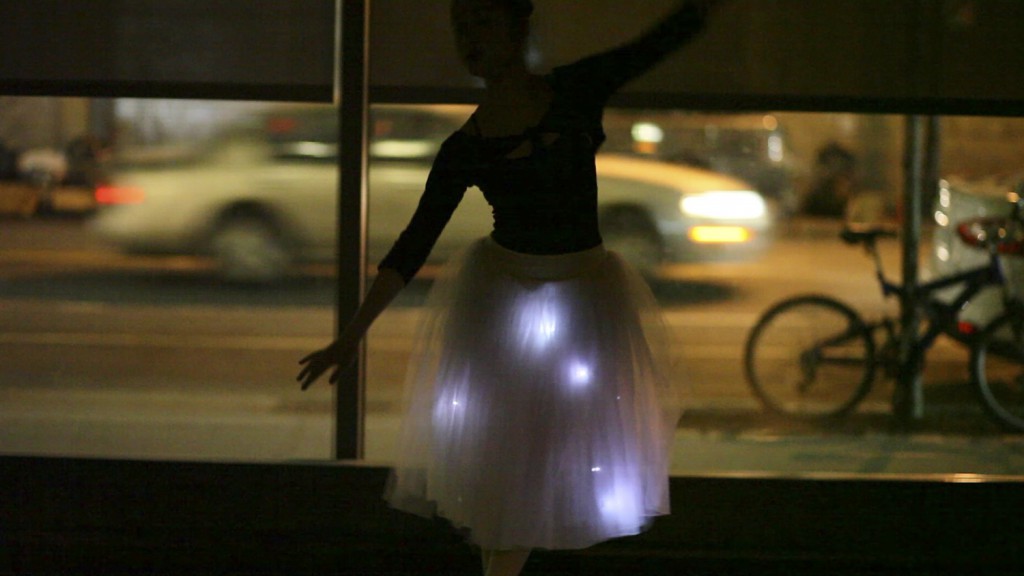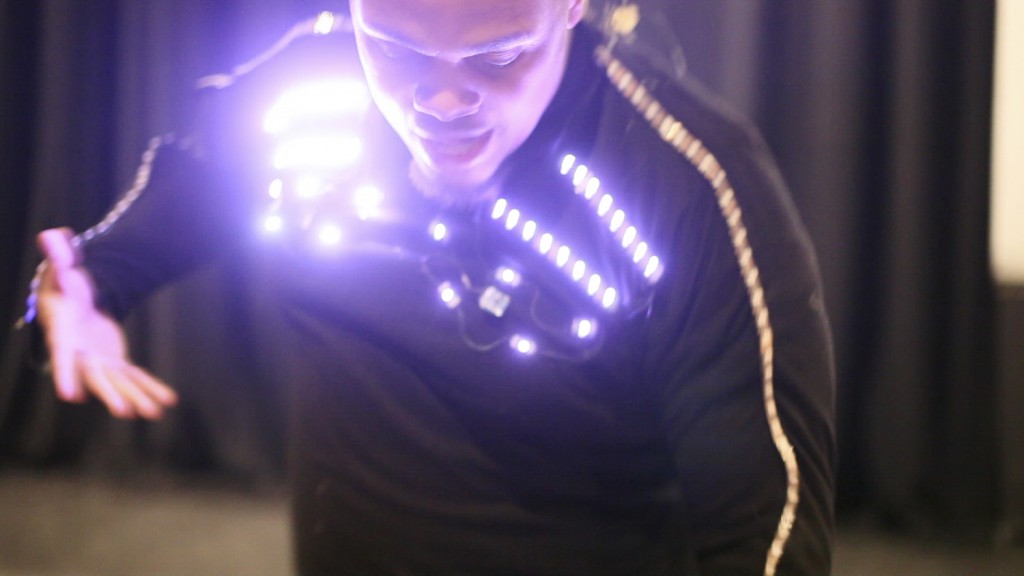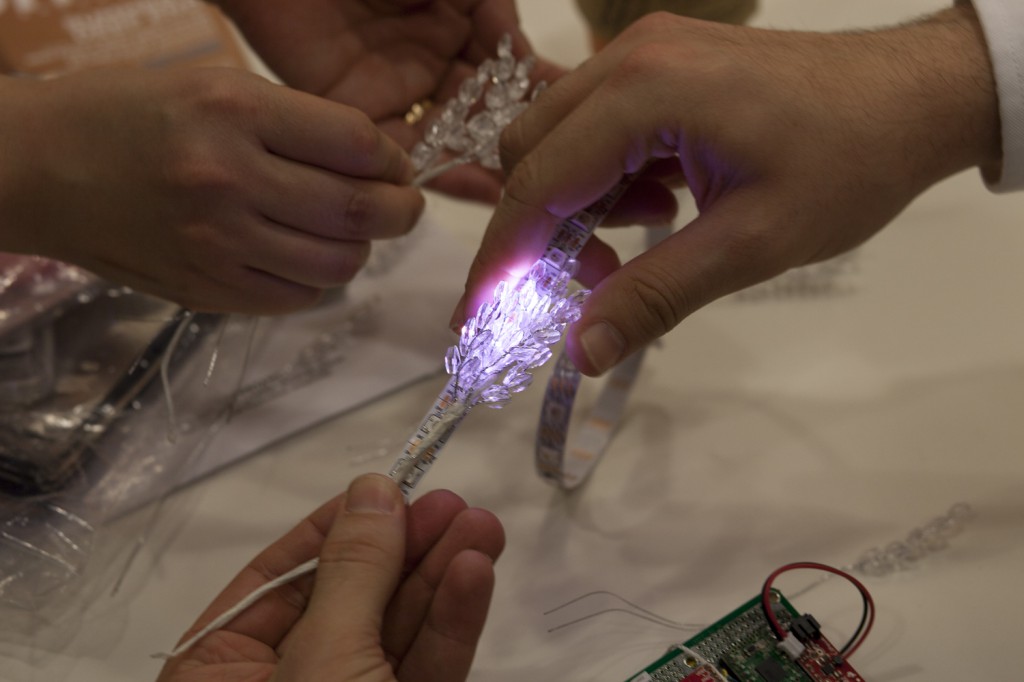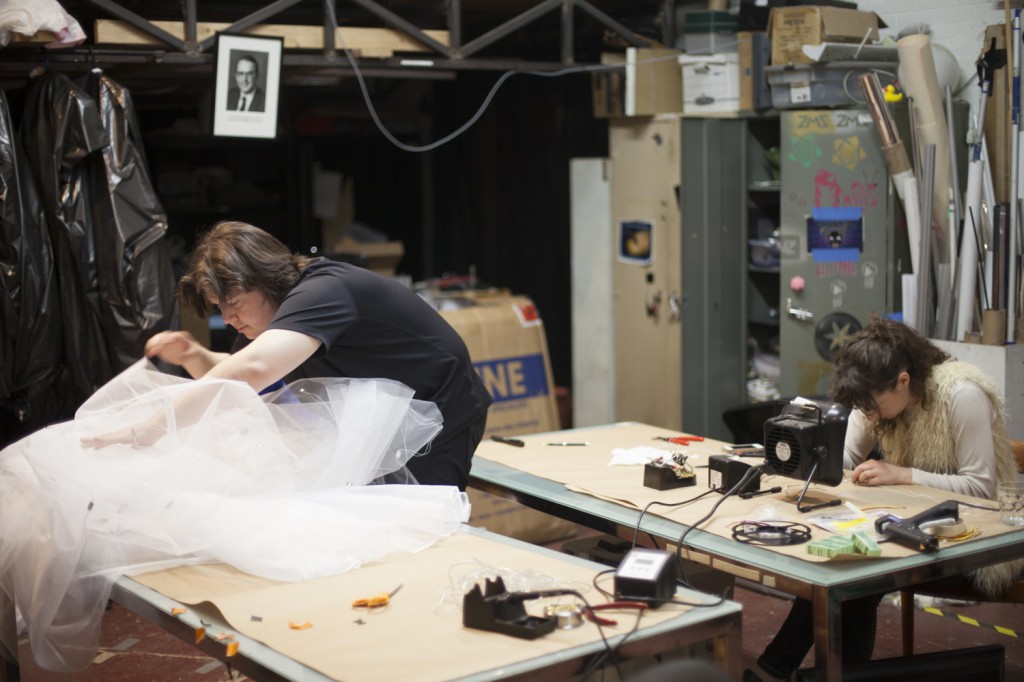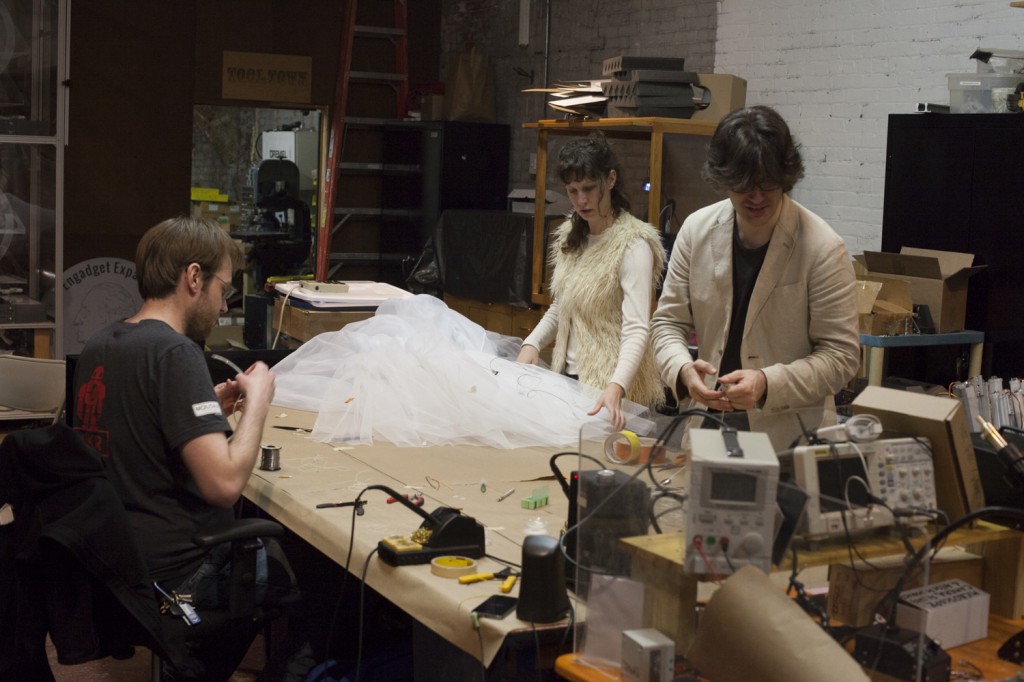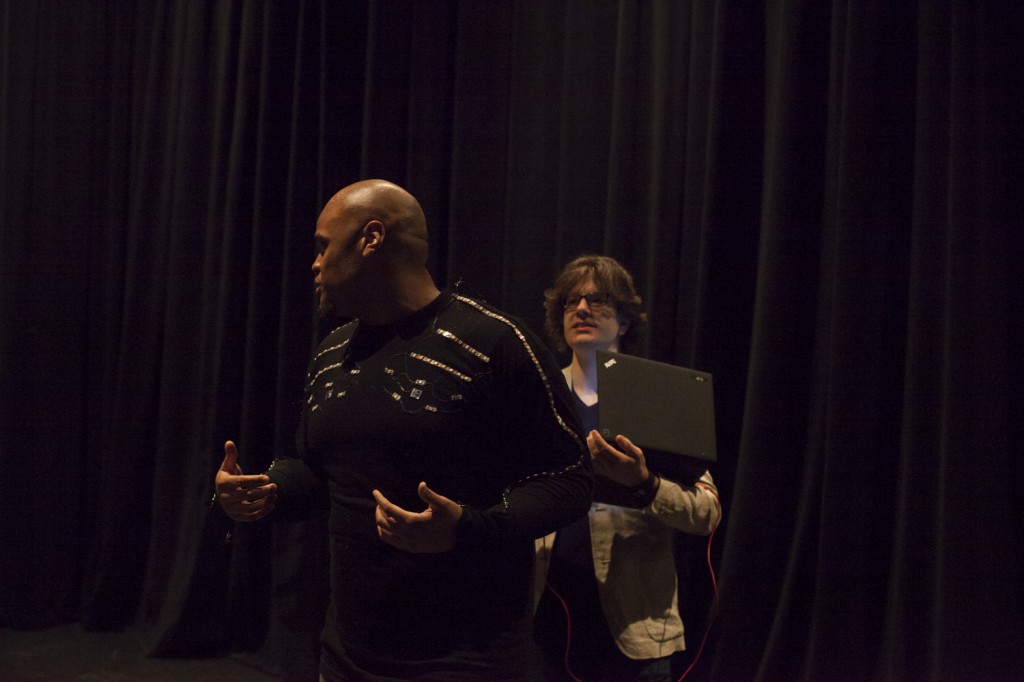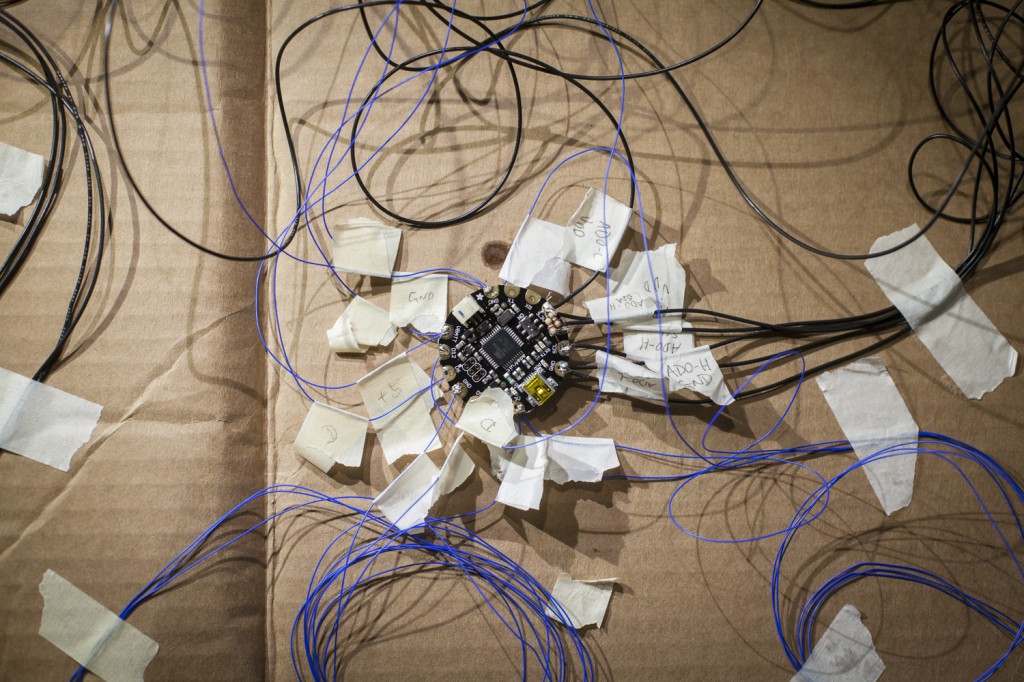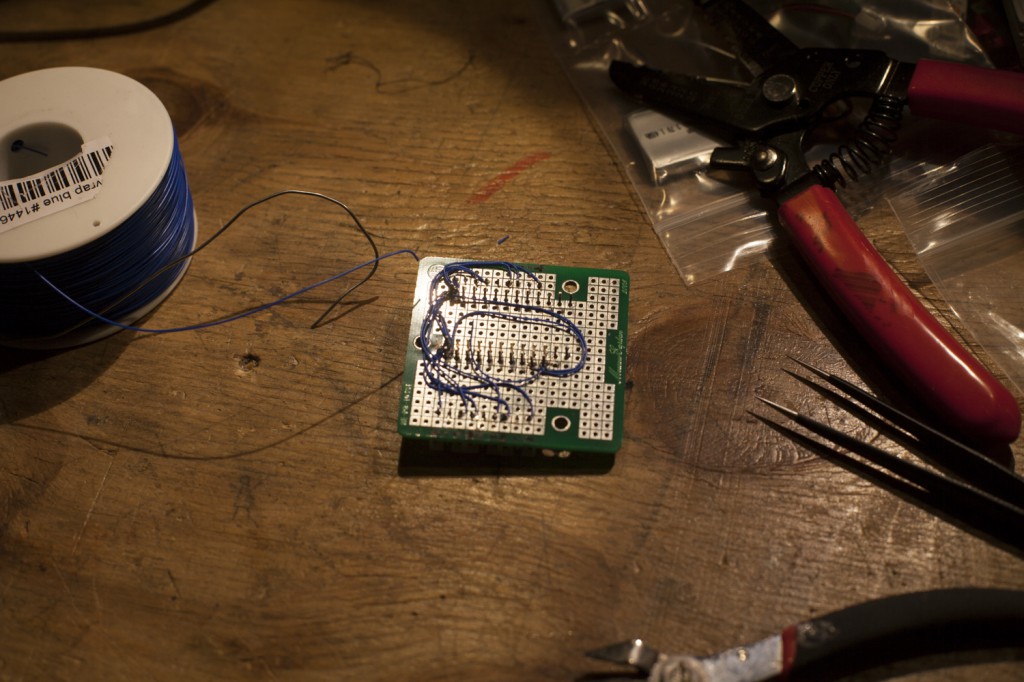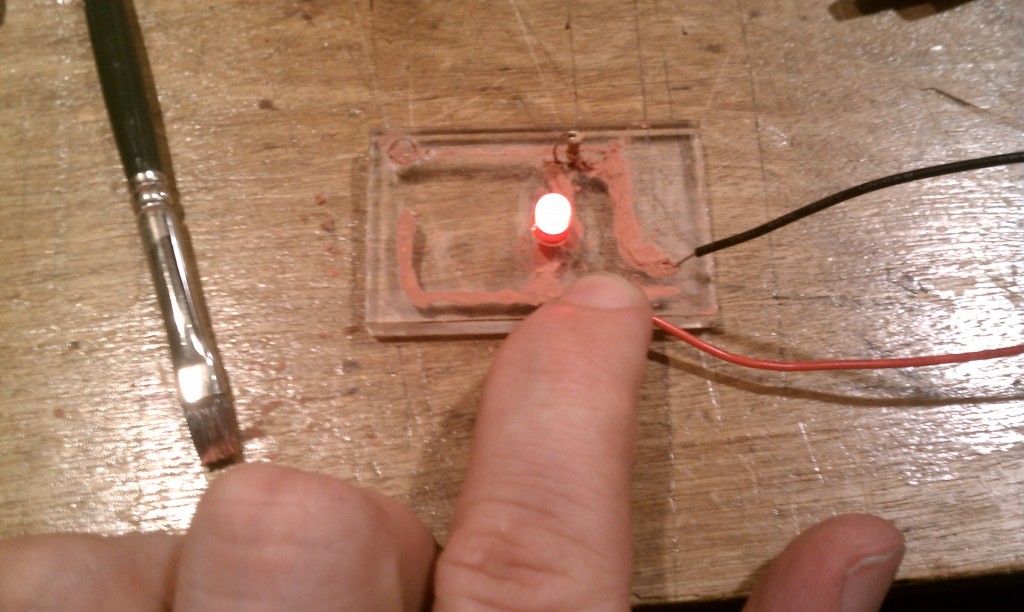Nick and Sayaka Vermeer, Olivia Barr, and William Ward have been working hard for the past couple weeks on an exciting project with the Brooklyn Ballet. We are transforming the dancers’ costumes into interactive performance pieces. Our contribution consists of six LED snowfall tutus for the ballerinas, one Pexel shirt for Mike “Supreme” Fields and six sparkling LED hair accessories for the young ballerinas. The dancers will be performing the snow scene from the Nutcracker in the Brooklyn Ballet‘s Vectors, Marys, and Snow performance from April 3rd to April 13th. Please support the project through our Kickstarter! There you can also watch an interview with Nick and Lynn Parkerson, founding artistic director and choreographer of Brooklyn Ballet. We’d really appreciate your donation to further our work! All our hardware designs and code are open source, and we hope to see more creative works mixing technology and dance.
Snowfall Tutus: To accomplish the snowfall/glitter efffect we’ve added LED lights, motion sensors, and custom coded/fabricated microcontrollers to the tutus. The sensor we used is called an accelerometer and its placed at the waist of the corset. It reacts with with movement of the dancer by increasing the amount and brightness of the LEDs with more vigorous movement from the dancer. Nick found a remarkably strong ultra flex 36 gauge silicone wire thats perfect for the supple construction of the tutus and its become a standard material at NYC Resistor for wearables. The wire connects 24 neopixels that are broken down into 6 strands of 4 pixels in each tutu. Special thanks to Max Henstell and Adam Mayer for helping in production. Take a look at this amazing video of our twinkling Tutu!
Pexel Shirt: Pexel Shirt is custom made for the dancer Mike “Supreme” Fields and is designed to interact with his pecks and arms. Mike is a popping artist and his dancing incorporates the flexing of muscle groups to create surface movement on his body. The shirt is activated by individual accelerometer sensors placed over his muscles that illuminate the LEDs through a Flora microcontroller. There are four sensors total, one on each peck and each wrist. When he flexes an individual peck it lights up. The lights on his arms are controlled by moving his wrists up/down or right/left. The entire piece is hand sewn including stitches in between individual pixel on the arm strands for optimum elasticity while still being secure. Watch the Mike in action here: Mike “Supreme” Fields
Sparkle Hair Clips: To accent the young ballerina’s costume we designed an LED accent on a hair clip. The clip uses a Gemma microcontroller and a strand of neopixels. The clear acrylic beads on the clip filter the LEDs and sparkle.
Please come out and see the show at the Brooklyn Ballet April 3rd – 13th and support our Kickstarter to fund the project!
